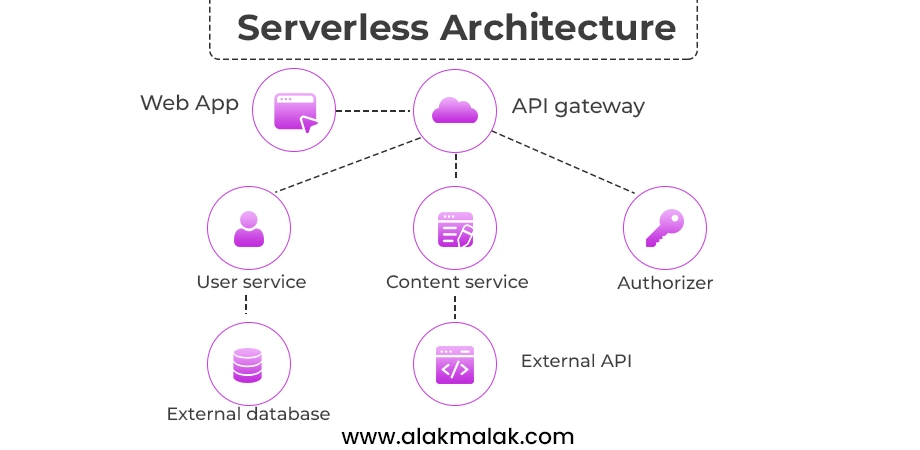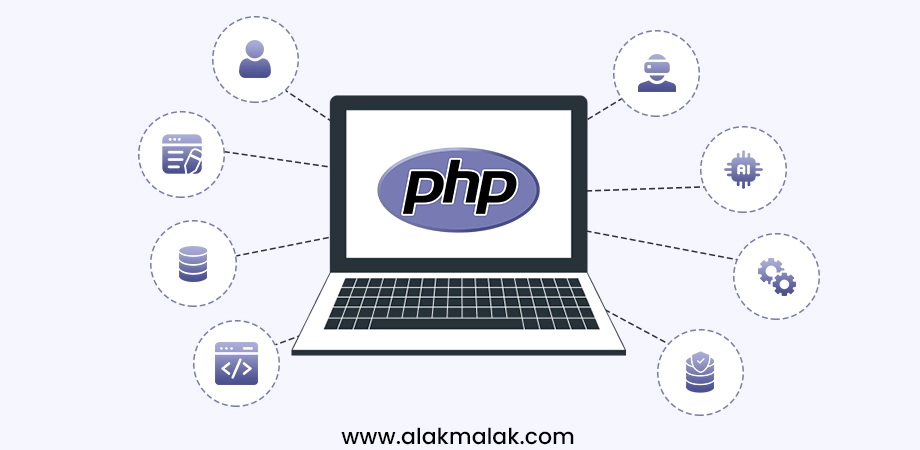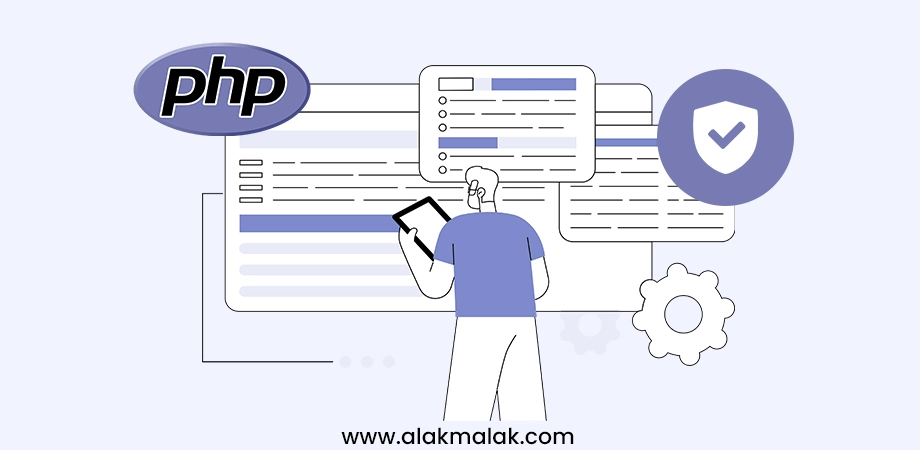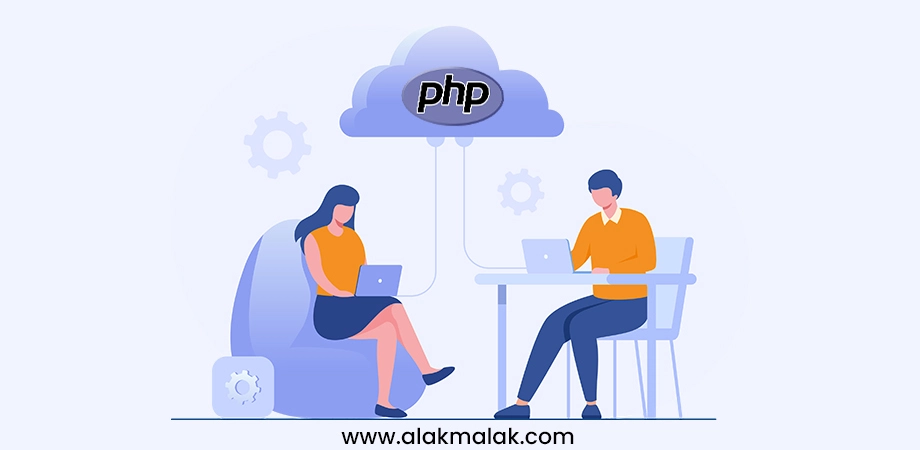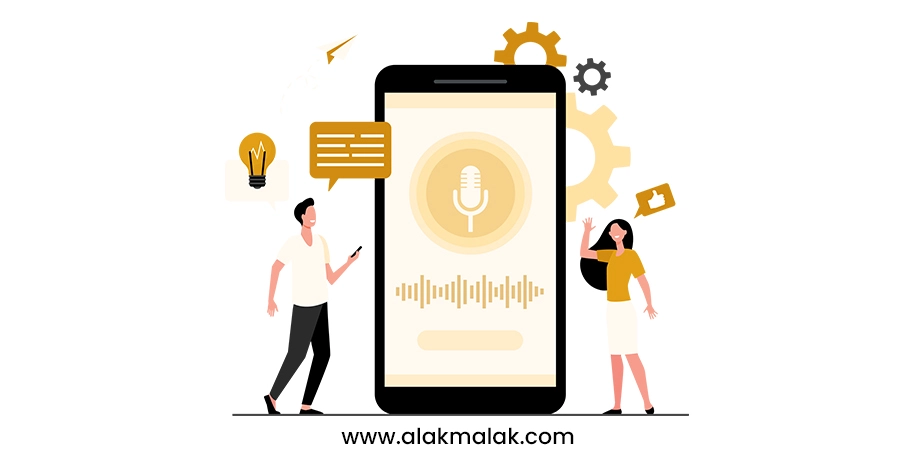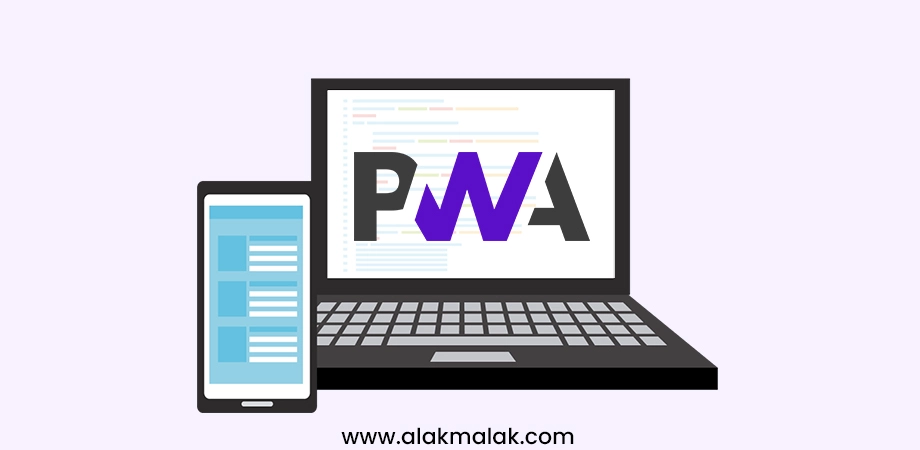In today’s fast-paced digital world, staying ahead of the curve is crucial for developers, especially those working with PHP – one of the most widely-used server-side scripting languages. As we approach 2024, new trends and advancements in PHP development are already starting to emerge, promising to revolutionize the way we build web applications.
If you’re a PHP developer or someone involved in web development projects, you might be wondering: “What PHP development trends should I be prepared for in 2024?” This question is important because keeping up with the latest trends can help you stay competitive, write more efficient and secure code, and deliver better user experiences.
In this blog post, we’ll explore the top PHP development trends that are expected to dominate in 2024. With over 18 years of experience as PHP development company in India, our team has a deep understanding of the language’s evolution and the factors shaping its future. We’ll share insights into emerging technologies, frameworks, and best practices that will help you stay ahead of the game.
Top PHP Development Trends
Top PHP Development Trends
1. Serverless Architecture
2. AI and Machine Learning Integration
3. Internet of Things (IoT) Integration
4. Security Focus
5. Static Typing
6. Cloud Adoption
7. Containerization
8. Community Collaboration
9. Focus on New Features
10. Voice Search Optimization
11. Blockchain Technology
12. Progressive Web Apps
Tools and Resources
Case Study: Acme Corporation’s Journey to Modernize their Legacy PHP Application
Stay Ahead of the Curve: Embrace the Future of PHP Development
1. Serverless Architecture
Serverless architecture, also known as Function-as-a-Service (FaaS), is an emerging cloud computing paradigm that eliminates the need for managing and provisioning servers. With serverless, developers can focus solely on writing code, while the cloud provider handles the underlying infrastructure, scaling, and resource allocation.
Why it is Important:
Serverless architecture offers several compelling benefits for PHP developers. First, it allows you to build and deploy applications without worrying about server management, resulting in significant cost savings and increased efficiency. Additionally, serverless functions are event-driven, meaning they are only executed when triggered by specific events, such as an HTTP request or a database update. This event-driven model can lead to better scalability and reduced operational overhead.
How to Implement
To implement serverless architecture in your PHP projects, you can leverage cloud providers’ serverless offerings, such as AWS Lambda, Google Cloud Functions, or Microsoft Azure Functions. Here are some specific steps you can take:
- Choose a cloud provider and familiarize yourself with their serverless offering.
- Break down your application into smaller, independent functions.
- Use PHP frameworks or libraries designed for serverless development, such as Bref or Serverless Framework.
- Implement event sources (e.g., HTTP requests, database events) to trigger your functions.
- Test and debug your serverless functions locally before deploying them.
- Monitor and optimize your serverless applications for performance and cost.
Example: A report by Gartner predicts that by 2025, 90% of global organizations will adopt serverless functions as part of their cloud-native strategies.
2. AI and Machine Learning Integration
Artificial Intelligence (AI) and Machine Learning (ML) are rapidly becoming essential components of modern software development, and PHP is no exception. AI and ML technologies can be integrated into PHP applications to enhance their capabilities, automate various processes, and provide more intelligent and personalized experiences for users.
Why it is Important:
Integrating AI and ML into PHP applications can offer several compelling benefits. First, it can enable developers to build more intelligent and adaptive systems that can learn from data, recognize patterns, and make predictions or decisions based on that knowledge. This can lead to improved user experiences, increased efficiency, and better decision-making processes within the application.
Additionally, AI and ML can help automate repetitive tasks, such as data entry, data processing, and even code generation, freeing up developers to focus on more complex and creative aspects of the project.
How to Implement:
To integrate AI and ML into your PHP applications, you can follow these steps:
- Familiarize yourself with AI and ML concepts, techniques, and tools.
- Choose a suitable AI/ML framework or library for PHP, such as TensorFlow, PyTorch, or Scikit-learn.
- Integrate the chosen framework or library into your PHP application using language bindings or APIs.
- Preprocess and prepare your data for training AI/ML models.
- Train and evaluate your AI/ML models using appropriate algorithms and techniques.
- Deploy and integrate the trained models into your PHP application.
- Continuously monitor, update, and improve your AI/ML models as new data becomes available.
Example: According to a survey by Deloitte, 83% of organizations believe that AI will be a critical factor in their success over the next two years. Additionally, the survey found that organizations that have successfully implemented AI and ML initiatives reported improved customer experiences, increased operational efficiency, and better decision-making capabilities.
3. Internet of Things (IoT) Integration
The Internet of Things (IoT) refers to the interconnected network of physical devices, vehicles, home appliances, and other items embedded with sensors, software, and network connectivity, allowing them to collect and exchange data. Integrating IoT capabilities into PHP applications, often with the assistance of an IoT Development Company, can enable developers to build powerful and innovative solutions that can interact with and control these connected devices.
Why it is Important:
Integrating IoT into PHP applications is becoming increasingly important for several reasons. First, it enables developers to create applications that can collect and analyze data from various IoT devices, providing valuable insights and enabling data-driven decision-making processes. Additionally, IoT integration allows for remote monitoring, control, and automation of connected devices, leading to improved efficiency, convenience, and cost savings.
How to Implement IoT Integration:
To integrate IoT capabilities into your PHP applications, you can follow these steps:
- Familiarize yourself with IoT concepts, protocols, and communication frameworks like MQTT, CoAP, and HTTP.
- Choose an appropriate IoT platform or service (e.g., AWS IoT, Google Cloud IoT, Azure IoT Hub) that can interact with your PHP application.
- Implement secure communication channels between your PHP application and the IoT platform or service.
- Develop PHP code to send and receive data from IoT devices, leveraging APIs or libraries provided by the chosen IoT platform.
- Implement data processing, analysis, and visualization capabilities within your PHP application to make sense of the collected IoT data.
- Continuously monitor and optimize the performance and security of your IoT-integrated PHP application.
Example: According to a report by Statista, the number of IoT-connected devices worldwide is projected to reach 30.9 billion by 2025, with a forecasted market value of $1.5 trillion.
4. Security Focus
With the increasing frequency and complexity of cyber threats, security has become a critical concern for web applications, including those built with PHP. A security focus in PHP development involves implementing robust measures to protect applications from various vulnerabilities, such as SQL injection, cross-site scripting (XSS), and unauthorized access attempts.
Why it is Important:
Prioritizing security in PHP development is crucial for several reasons. First and foremost, it helps protect sensitive data and user information from cyber threats, thereby maintaining the trust and credibility of your application. Additionally, a security breach can lead to significant financial losses, legal implications, and damage to your organization’s reputation.
How to Implement: To implement a strong security focus in your PHP development projects, you can follow these steps:
- Educate yourself and your team on common web application vulnerabilities and security best practices, such as the OWASP Top 10 and secure coding guidelines.
- Utilize secure PHP frameworks and libraries that prioritize security features and regular security updates.
- Implement input validation and sanitization techniques to prevent injection attacks and other security vulnerabilities.
- Follow secure authentication and authorization mechanisms, such as strong password policies, multi-factor authentication, and role-based access control.
- Regularly update your PHP version, frameworks, and third-party libraries to ensure that you have the latest security patches and fixes.
- Implement secure communication protocols (e.g., HTTPS) and data encryption techniques to protect data in transit and at rest.
- Conduct regular security audits, penetration testing, and vulnerability assessments to identify and address potential security weaknesses.
Example: According to a report by IBM, the average cost of a data breach in 2022 was $4.35 million, highlighting the importance of investing in robust security measures.
5. Static Typing
Static typing is a programming language feature that enforces the explicit declaration of variable and function parameter types during development. In contrast to PHP’s traditional dynamic typing approach, static typing ensures that variables and parameters have the correct data types, helping to prevent type-related errors and improving code quality.
Why it is Important:
Adopting static typing in PHP development offers several significant benefits. First, it enhances code reliability and maintainability by catching type-related errors during development instead of runtime, reducing the likelihood of unexpected behavior or crashes. Additionally, static typing can improve code readability and make it easier to understand the intended data types and expectations within the codebase.
How to Implement Static Typing:
To implement static typing in your PHP projects, you can follow these steps:
- Upgrade to PHP 7.4 or later, which includes built-in support for static typing through type declarations and strict mode.
- Declare variable and parameter types in your PHP code using the appropriate syntax (e.g., string $variable, int $parameter).
- Enable strict mode by adding declare(strict_types=1); at the beginning of your PHP files to enforce strict type checking.
- Consider using static analysis tools, such as PHPStan or Psalm, to identify potential type-related issues and ensure adherence to type declarations.
- Gradually introduce static typing into your existing codebase, starting with new code or critical components, and gradually refactor older parts of the application.
- Provide training and documentation to your development team to ensure a smooth transition to static typing and consistent coding practices.
Example: Another study by Microsoft Research found that statically typed languages, such as TypeScript, can reduce the number of defects in production code by 15% compared to dynamically typed languages.
6. Cloud Adoption
Cloud adoption refers to the practice of leveraging cloud computing services, such as Infrastructure-as-a-Service (IaaS), Platform-as-a-Service (PaaS), and Software-as-a-Service (SaaS), for hosting and delivering web applications. With cloud adoption, PHP developers can benefit from scalable and reliable infrastructure, reduced operational costs, and access to a wide range of cloud services and tools.
Why it is Important:
Adopting cloud services for PHP development is becoming increasingly important for several reasons. First, it enables developers to focus on building applications without worrying about managing and maintaining physical servers and infrastructure. Cloud services offer automatic scaling, load balancing, and high availability, ensuring that applications can handle fluctuating traffic and remain resilient to failures.
How to Implement
To adopt cloud services for your PHP development projects, you can follow these steps:
- Evaluate and choose a cloud provider that aligns with your project requirements and budget, such as Amazon Web Services (AWS), Google Cloud Platform (GCP), or Microsoft Azure.
- Familiarize yourself with the cloud provider’s services, tools, and best practices for deploying and managing PHP applications.
- Migrate your existing PHP applications to the cloud, or develop new applications using cloud-native approaches and services.
- Leverage cloud-based databases, caching solutions, and other managed services to enhance application performance and scalability.
- Implement automated deployment processes, such as continuous integration and continuous deployment (CI/CD), to streamline the release cycle.
- Monitor application performance, security, and cost optimization using cloud-native monitoring and management tools.
- Continuously evaluate and adopt new cloud services and features as they become available to improve your application’s capabilities and efficiency.
Example: According to a report by Gartner, global spending on public cloud services is expected to reach $591.8 billion in 2023, a 20.7% increase from 2022.
7. Containerization
Containerization is a virtualization technique that allows developers to package an application and its dependencies into a lightweight, portable, and self-contained unit called a container. Containers provide an isolated and consistent environment for running applications, ensuring that they behave the same way across different computing environments, from development to production.
Why it is Important:
Adopting containerization for PHP development offers several compelling benefits. First, it simplifies the deployment and scaling of applications by encapsulating all the necessary components into a single package. This ensures that applications run consistently across different environments, reducing the risk of compatibility issues and the “works on my machine” problem.
How to Implement Containerization:
To implement containerization in your PHP development projects, you can follow these steps:
- Choose a container runtime and orchestration platform, such as Docker and Kubernetes, which are widely adopted in the PHP community.
- Define your application’s dependencies and configurations in a Dockerfile, a script that describes how to build and run your PHP application within a container.
- Build and test your containerized PHP application locally, ensuring that it runs correctly and includes all necessary dependencies.
- Push your container images to a container registry, such as Docker Hub or a private registry, for easier deployment and sharing across environments.
- Deploy your containerized PHP application to a container orchestration platform, like Kubernetes, for scaling, load balancing, and high availability.
- Implement continuous integration and continuous deployment (CI/CD) pipelines to automate the building, testing, and deployment of your containerized applications.
- Monitor and manage your containerized applications using tools like Prometheus and Grafana for monitoring, and Istio or Linkerd for service mesh management.
Example:
According to a survey by Datadog, 84% of organizations are using containers in production, with Docker being the most widely adopted container runtime.
8. Community Collaboration
Community collaboration refers to the active participation and contribution of developers to the PHP ecosystem, including open-source projects, frameworks, libraries, and knowledge-sharing platforms. This collaborative approach fosters innovation, knowledge exchange, and the development of robust and well-maintained tools and resources for the PHP community.
Why it is Important:
Embracing community collaboration in PHP development is crucial for several reasons. First, it promotes the sharing of best practices, enabling developers to learn from each other’s experiences and stay up-to-date with the latest trends and techniques. Additionally, contributing to open-source projects and frameworks helps improve their quality, security, and functionality, benefiting the entire PHP community.
How to Implement
To embrace community collaboration in your PHP development projects, you can follow these steps:
- Participate in online communities, forums, and social media groups related to PHP development, such as PHP.net, Reddit’s /r/PHP, and PHP-related Discord servers.
- Contribute to open-source PHP projects and frameworks by reporting issues, submitting bug fixes, or proposing new features through pull requests.
- Share your knowledge and experiences by writing blog posts, creating tutorials, or presenting at local or online PHP meetups and conferences.
- Encourage your team members to actively engage with the PHP community by allocating time for community contributions and knowledge-sharing activities.
- Foster an open and collaborative culture within your organization, encouraging team members to seek feedback and collaborate with external developers and experts.
- Consider sponsoring or contributing to open-source projects that your team or organization heavily relies on.
Example:
According to a survey by GitHub, 94% of respondents believe that open-source software is important to their organizations, highlighting the value placed on community collaboration and open-source contributions.
9. Focus on New Features
PHP, like many other programming languages, is continuously evolving, with new features and improvements being introduced in each major release. Staying up-to-date with these new features and embracing them in development can help developers write more efficient, secure, and maintainable code, while also taking advantage of the latest language enhancements and capabilities.
Why it is Important:
Keeping a focus on new PHP features is crucial for several reasons. First, it enables developers to leverage the latest language improvements, which often include performance optimizations, new syntax constructs, and enhanced functionality. This can lead to more efficient and readable code, improved developer productivity, and better application performance.
How to Implement
To maintain a focus on new PHP features in your development projects, you can follow these steps:
- Stay informed about upcoming PHP releases and the new features they introduce by regularly checking the official PHP documentation, release notes, and community resources.
- Encourage your development team to attend conferences, meetups, or online sessions related to new PHP features, where experts share insights and best practices.
- Set aside time for experimentation and learning, allowing developers to explore and familiarize themselves with new features through personal projects or proof-of-concept implementations.
- Gradually introduce new PHP features into your existing codebase, starting with low-risk areas or new projects, and gradually refactor legacy code to take advantage of the latest language improvements.
- Provide training and documentation to ensure that your entire development team is aware of and understands how to effectively utilize new PHP features.
- Continuously evaluate the potential benefits and impact of adopting new features, weighing factors such as performance improvements, code readability, and backwards compatibility.
Example: According to a report by SlashData, 58% of developers cite language and framework improvements as a key motivator for learning and adopting new technologies.
10. Voice Search Optimization
Voice search optimization refers to the practice of optimizing web applications and content to be easily discoverable and accessible through voice-based searches and virtual assistants. With the growing popularity of voice assistants like Alexa, Siri, and Google Assistant, it has become increasingly important for developers to ensure that their PHP applications and websites are optimized for voice search to provide a seamless user experience.
Why it is Important:
Voice search optimization is crucial for several reasons. First, it aligns with the growing trend of users preferring to interact with digital services through voice commands, particularly on mobile devices and smart speakers. By optimizing for voice search, developers can ensure that their PHP applications and websites are visible and accessible to users who prefer this mode of interaction.
How to Implement
- Conduct keyword research to identify common voice search queries related to your application or website, and incorporate these phrases into your content and metadata.
- Structure your content in a conversational and question-answering format, using natural language and addressing common user queries.
- Implement structured data markup, such as Schema.org, to provide rich information about your content and enhance its visibility in voice search results.
- Ensure that your website is optimized for mobile devices and follows best practices for responsive design, as many voice searches originate from mobile devices.
- Improve site speed and performance, as voice search assistants prioritize fast-loading and responsive websites.
- Consider integrating your PHP application with voice assistant platforms like Alexa Skills or Google Actions to provide direct voice-based interactions.
Example: According to a report by Voicebot.ai, the number of voice assistant users worldwide is projected to reach 8.4 billion by 2024, highlighting the growing importance of voice search optimization for web applications.
11. Blockchain Technology
Blockchain technology is a decentralized, distributed digital ledger that records transactions across multiple computers in a secure and transparent manner. While initially associated with cryptocurrencies like Bitcoin, the potential applications of blockchain extend far beyond financial transactions. In the context of PHP development, blockchain can be integrated to enable secure and transparent data sharing, smart contract execution, and decentralized application (DApp) development.
Why it is Important:
Integrating blockchain technology into PHP applications is becoming increasingly important for several reasons. First, it offers enhanced security and transparency by ensuring that data is immutable and distributed across a network of nodes, reducing the risk of tampering or centralized control. Additionally, blockchain enables the creation of trustless systems, where parties can interact and transact without relying on intermediaries, potentially reducing costs and increasing efficiency.
How to Implement
To integrate blockchain technology into your PHP applications, you can follow these steps:
- Familiarize yourself with blockchain concepts, architectures, and popular platforms like Ethereum, Hyperledger, and Bitcoin.
- Choose a suitable blockchain platform or framework that aligns with your project requirements and supports PHP integration.
- Utilize PHP libraries and SDKs provided by the chosen blockchain platform to interact with the blockchain network, deploy smart contracts, and build DApps.
- Implement secure communication channels between your PHP application and the blockchain network, ensuring proper authentication and authorization mechanisms.
- Develop and test smart contracts using PHP-compatible languages like Solidity (Ethereum) or Chaincode (Hyperledger Fabric).
- Integrate blockchain-based identity and access management solutions to enhance security and user authentication.
- Continuously monitor and optimize the performance, scalability, and security of your blockchain-integrated PHP application.
Example: According to a report by Gartner, the business value added by blockchain will grow to $3.1 trillion by 2030, highlighting the significant potential and impact of this technology across various industries.
12. Progressive Web Apps
Progressive Web Apps (PWAs) are web applications that combine the best features of traditional websites and native mobile apps. They are designed to provide a seamless, app-like experience to users, regardless of whether they are accessed through a web browser or installed on a device. PWAs are built using standard web technologies like HTML, CSS, and JavaScript, making them compatible across multiple platforms and devices.
Why it is Important:
Implementing Progressive Web Apps in PHP development is crucial for several reasons. First, PWAs offer a faster and more reliable user experience by leveraging caching and offline capabilities, ensuring that content and functionality are available even in poor network conditions. This can lead to increased user engagement and better performance metrics.
How to Implement
To implement Progressive Web Apps in your PHP projects, you can follow these steps:
- Familiarize yourself with PWA concepts, best practices, and the required technologies (Service Workers, Web App Manifest, HTTPS, and responsive design).
- Ensure that your PHP application is served over HTTPS, as it is a prerequisite for PWAs.
- Implement Service Workers to enable offline capabilities, caching, and push notifications in your PWA.
- Create a Web App Manifest file, which provides metadata about your PWA, such as name, icons, and display modes.
- Optimize your application for performance by following best practices like code-splitting, lazy loading, and asset optimization.
- Test and debug your PWA using tools like Lighthouse and PWA-friendly browsers like Chrome or Firefox.
- Deploy your PWA and promote its installation on compatible devices and platforms.
Example: According to a report by PWastats, web pages that have implemented PWA features have an average conversion rate of 36%, compared to 3% for traditional websites.
Tools and Resources
- PHP: The Right Way: This is a free online resource that provides a comprehensive guide to modern PHP development best practices, covering various topics such as security, testing, and deployment. It’s a great starting point for developers looking to improve their PHP skills and stay current with the latest trends. (https://phptherightway.com/)
- PHP Package Repository (Packagist): Packagist is the official repository for PHP packages and libraries, offering a vast collection of open-source resources that can be easily integrated into your projects. It’s an essential tool for taking advantage of the latest PHP frameworks, libraries, and utilities. (https://packagist.org/)
- PHP Approved Bundles: PHP Approved Bundles is a set of pre-configured and optimized PHP distributions that include a curated selection of popular components and libraries. It simplifies the process of setting up a modern PHP development environment and ensures that you’re using compatible and secure versions of the required tools. (https://php-approved.org/)
- PHP-FIG (PHP Framework Interop Group): PHP-FIG is a community-driven initiative that promotes interoperability and standardization among PHP frameworks and libraries. Their website provides access to various PHP Standards Recommendations (PSRs), which can help developers write more consistent and maintainable code. (https://www.php-fig.org/)
- PHP Weekly Newsletter: This free weekly newsletter curates the latest news, articles, and resources related to PHP development. Subscribing to this newsletter can help you stay informed about emerging trends, best practices, and community updates. (https://phpweekly.com/)
- PHP Roadmap: The official PHP Roadmap provides an overview of the planned features and improvements for upcoming PHP versions. It’s a valuable resource for developers who want to stay ahead of the curve and prepare for future PHP releases. (https://wiki.php.net/rfc/roadmap)
- PHP Developer Communities and Forums: Engaging with developer communities and forums, such as Reddit’s /r/PHP, PHP.net forums, and Stack Overflow, can provide access to a wealth of knowledge, best practices, and real-world experiences shared by other PHP developers.
By leveraging these tools and resources, PHP developers can stay informed about the latest trends, best practices, and emerging technologies in the PHP ecosystem, enabling them to write more efficient, secure, and maintainable code.
Case Study: Acme Corporation’s Journey to Modernize their Legacy PHP Application
Acme Corporation is a leading provider of supply chain management solutions. Their core application, built with PHP, had been in service for over a decade, but it was starting to show its age. The monolithic codebase was becoming increasingly difficult to maintain, and the application struggled to keep up with the company’s growing demand and modern user expectations.
In 2022, Acme’s leadership team recognized the need for a comprehensive modernization effort to future-proof their application and stay competitive in the market. They assembled a dedicated team of PHP developers and tasked them with implementing the latest PHP development trends and best practices.
The Journey:
- Containerization and Cloud Adoption: The first step was to containerize the application using Docker and deploy it to a cloud-based infrastructure on AWS. This not only improved scalability and portability but also enabled seamless integration with other AWS services like managed databases, caching, and monitoring tools.
- Static Typing and Security Focus: The team introduced static typing using PHP 7.4’s built-in type declarations and strict mode. They also conducted comprehensive security audits and implemented robust input validation, authentication, and authorization mechanisms to mitigate vulnerabilities.
- Serverless Architecture and AI Integration: Acme leveraged AWS Lambda for serverless functions, which allowed them to offload non-critical tasks and improve overall application performance. They also integrated machine learning models using AWS SageMaker to provide intelligent recommendations and insights to their customers.
- Progressive Web App (PWA): To enhance the user experience, the team transformed the web application into a PWA, enabling features like offline functionality, push notifications, and a seamless, app-like experience across devices.
- Community Collaboration and Open-Source Contributions: Acme’s developers actively participated in PHP communities, contributed to open-source projects, and shared their learnings through blog posts and conference presentations.
The Results:
- Improved Performance and Scalability: The modernized application saw a 30% reduction in response times and could handle twice the traffic volume compared to the previous version.
- Enhanced Security and Reliability: Static typing and security best practices eliminated numerous potential vulnerabilities, leading to a 60% decrease in reported security incidents.
- Increased Developer Productivity: The adoption of modern tools, frameworks, and best practices resulted in a 25% increase in developer productivity, enabling faster feature delivery and shorter release cycles.
- Better User Experience: The PWA implementation led to a 40% increase in user engagement and a 20% improvement in conversion rates.
Key Learnings:
- Embrace Change and Stay Current: Continuously learning and adopting the latest PHP development trends and best practices enabled Acme to future-proof their application and stay competitive in the market.
- Collaborate and Contribute: Active participation in the PHP community and open-source contributions not only benefited the ecosystem but also helped Acme’s developers stay up-to-date and learn from others’ experiences.
- Invest in Developer Enablement: Providing training, resources, and dedicated time for experimentation empowered Acme’s developers to implement modern technologies effectively, leading to improved productivity and code quality.
- Prioritize User Experience: By prioritizing the user experience through initiatives like the PWA implementation, Acme was able to enhance user engagement, satisfaction, and ultimately, business success.
Acme Corporation’s modernization journey serves as a compelling example of how embracing the latest PHP development trends can transform a legacy application into a modern, scalable, and user-friendly solution, positioning the company for continued growth and success in the rapidly evolving digital landscape.
Stay Ahead of the Curve: Embrace the Future of PHP Development
In this ever-evolving landscape of web development, staying up-to-date with the latest trends and advancements is crucial for success. The PHP ecosystem continues to thrive, offering developers a rich set of tools and frameworks to build robust, scalable, and secure applications.
The main takeaways from our exploration of the top PHP development trends for 2024 are:
- Accelerated Adoption of PHP 8: With its improved performance, new features, and enhanced security, PHP 8 is poised to become the industry standard, enabling developers to build faster and more efficient applications.
- Leverage Modern PHP Frameworks: Frameworks like Laravel, Symfony, and CodeIgniter will continue to gain popularity, providing developers with powerful tools and conventions to streamline development processes and ensure best practices.
- Embrace Serverless and Cloud-Native Architectures: As businesses increasingly demand scalability and cost-efficiency, serverless and cloud-native architectures will become more prevalent, enabling developers to build and deploy PHP applications with ease.
- Prioritize Security and Performance Optimization: With the ever-increasing threat landscape and user expectations for fast and responsive applications, developers must prioritize security measures and performance optimization techniques.
- Integrate Cutting-Edge Technologies: Emerging technologies such as artificial intelligence, machine learning, and Internet of Things (IoT) will continue to shape the future of web development, and PHP developers should be prepared to integrate these technologies into their applications.
Now is the time to take action and position yourself at the forefront of PHP development. Whether you’re a seasoned website developer or just starting your journey, it’s essential to continuously learn and adapt to stay competitive in the industry.
If you’re seeking to elevate your PHP development skills or require guidance on implementing these trends in your projects, our team of experts is here to assist you. Don’t hesitate to reach out for a consultation or to learn more about our PHP development services. Together, we can ensure that your applications are future-proof and ready to meet the demands of the digital age.

 By: Rushik Shah
By: Rushik Shah
